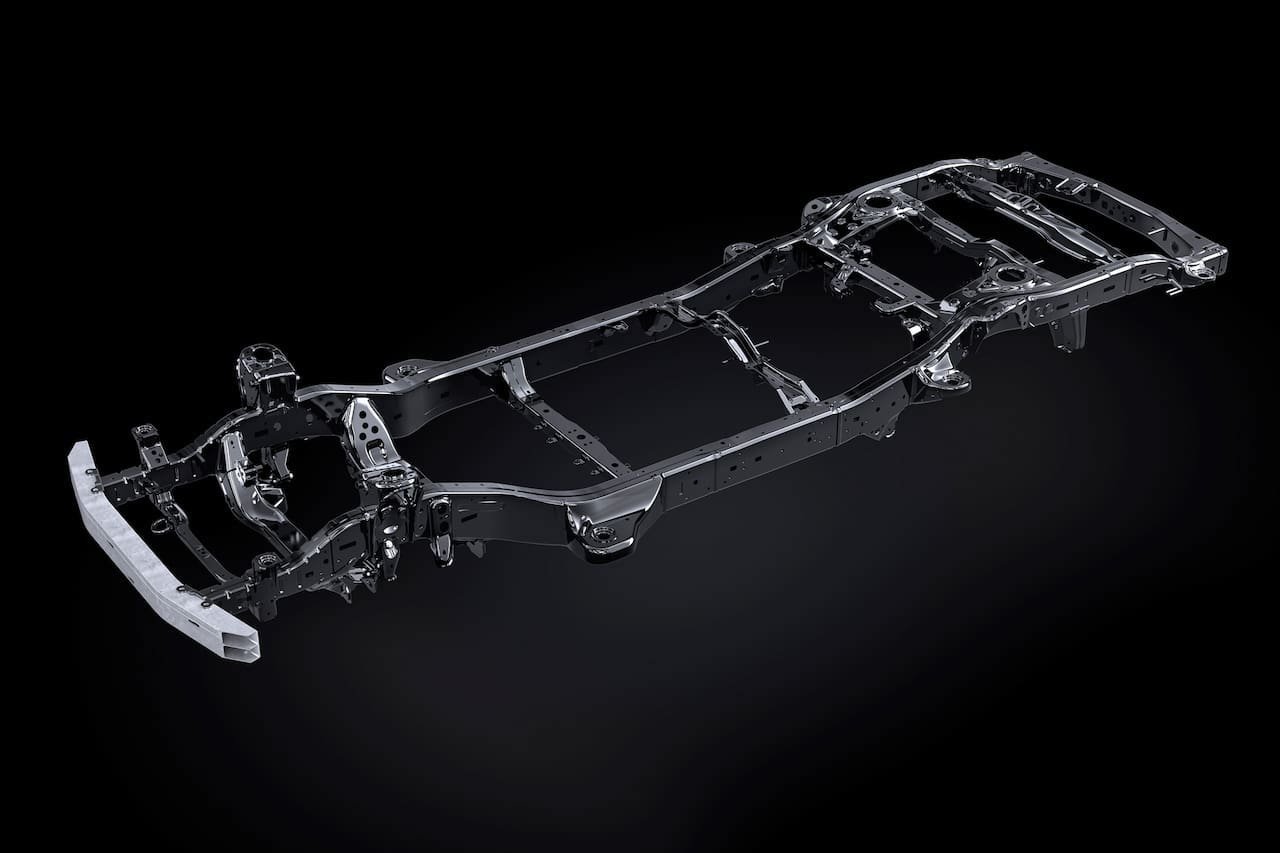Toyota (finally) steps up with the new Tacoma*
*Or: Never again will a Toyota factory rep have to say with a straight face, “Drum brakes are better off road!”
Anyone who has read my writing is aware of the huge respect I have for Toyota’s vehicles—a respect gained through long personal experience, from my very first car, a used 1971 Corolla, to the FJ40 I’ve owned for 45 years, to the more-than-several Toyota pickups and Land Cruisers Roseann and I have owned, along with those we’ve driven on several continents.
Those same people also know the very high standards to which I hold Toyota, and my willingness to call out the company when I believe a vehicle it offers for sale does not meet those standards.
No Toyota model has endured more of those call-outs than the previous two generations of the Tacoma. From the model’s laughably archaic rear drum brakes (here) to its open-channel rear frame section (shared with the previous Tundra, here) to high-revving engines unsuitable for truck duty (here), it annoyed me that my company was clearly coasting and cost-cutting, unwilling to invest in improving a vehicle that remained safely on top of the sales charts.
Either someone at Toyota has been reading my stuff (unlikely), or the company noticed that newer trucks such as the Chevrolet Colorado, Ford Ranger, and Nissan Frontier had decidedly surpassed the Tacoma in virtually every area except (arguably) reliability.
Whatever the reason, the 2024 Tacoma is a huge, huge leap.
Begin with the chassis, which is now (or rather, once again) of fully boxed construction, far more torsionally and longitudinally rigid than the outgoing platform. It’s a modification of the same chassis that underlies the new Tundra and Sequoia. In addition to the boxed sections, it’s laser-welded from high-strength steel and employs strengthened crossmembers. Bravo.
Next, suspension: While base models (SR, SR5, and the Prerunner) will still employ leaf-spring rear suspension, higher-spec models will benefit from a multi-link coil-spring rear, which will improve ride and handling without sacrificing load-carrying—in fact, load capacity is significantly increased on models such as the new, overlanding-focused Trailhunter. (I’m hoping Toyota learned from the new coil-sprung Tundra, which can exhibit squirrelly behavior under heavy towing loads. This is easy to correct with proper bushing and spring specs.)
Oh, and, yes, all models will sport rear disc brakes. Welcome to the late 20th century, Toyota!
Next: Engines. Remember me bitching about 4,000rpm-plus torque peaks? How about a torque curve that peaks at 1,700 rpm? That’s diesel-like twisting power, and exactly what a truck needs.
The new Tacoma has just one engine configuration: a turbocharged, 2.4-liter inline four-valve four-cylinder. However, differing states of tune, plus the addition of a hybrid drivetrain, result in a spread of horsepower and torque ratings—none of them sub-par, and all with more torque than horsepower. Again—Bravo.
The base SR engine—with an eight-speed automatic transmission replacing the previous six-speed—is a marked improvement over the previous base 2.7-liter engine (159 bhp, 180 lb.ft.@ 3,800 rpm) in horsepower, torque, and where that torque comes in. And take a look at the i-Force Max turbo hybrid, with 326 hp at 6,000 rpm and an astounding 465 lb.ft. of torque at 1,700 rpm, assisted by an electric motor that delivers 48 hp and 184 lb.ft. These were figures I previously only dreamed of having available in the Tacoma. Plus, Toyota gave an approving nod to the few remaining manual-transmission aficionados left in the U.S., with a six-speed clutch-operated option.
What remains to be revealed are a few towing and payload ratings, plus the critical question of fuel economy. However, unlike the previous Tacoma engines, which offered both mediocre horsepower and mediocre fuel economy, at least we know we’ll get the power this time.
Another very pleasant surprise: The dash of the 2024 Tacoma—aside from the ubiquitous, industry-wide giant iPad tacked onto the middle, which I guess I really need to get over—is simple, handsome and functional. In fact I’d put it a close second to my all-time favorite dash layout, that of the current Land Rover Defender. The Tacoma has even incorporated similar all-LED gauges in front of the driver, which should be clearly legible in any light. To repeat myself: Bravo.
Then there’s the external styling. I squinted when I first looked at an actual photo of the new Tacoma, fearing it would ape the design of the new Tundra, which I find . . . how can I put this diplomatically . . . awkward. But no—the Tacoma, especially in the front end, lacks the comically massive, blunt, unharmonious “lines”of the Tundra. The Tacoma is aggressive, but various styling elements combine to break up the whole in to manageable segments. I actually like it, even if I still think our 2000 Tacoma was the best looking era of the model.
Other available niceties? Driver-disconnectable anti-roll bar. ARB-sourced components, including OME suspension. Thirty three-inch tires. Recovery-capable steel rear bumper. The list goes on.
So far I think the new Tacoma is a stunningly bold and much-needed leap for Toyota. It’s enough to make me stop dreaming about the Hilux (well, except for that turbodiesel . . .). The big remaining question is, will Toyota be able to put this all-new model into production and retain the legendary Toyota reliability? The first year of the 2016 update was notable for a higher number of recalls than usual. Only time will tell if the company can hit their marks first time out this time.
In the meantime, as I mentioned: Bravo, Toyota. I am eagerly anticipating a road test as soon as I can arrange it.






